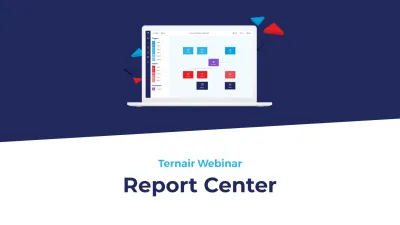Does your data understand your customer

For: marketing managers, digital and insight managers
Reading Time: 10 minutes
This article is part of a blog series on recognizable signals for organizations that are moving toward a more data-driven marketing approach. To better understand and help leads and customers via, for example, a Customer Data Platform and Marketing Automation. An abbreviated whitepaper with customer examples and a simple business case is also available.
It's all about your data, it's all about your customer
Collecting customer data is relatively easy. Unlocking that data properly is more difficult, but with help it can be done better and better. Using them in such a way that your customer actually benefits, for example through marketing or process automation, is still an enormous challenge.
And that in turn provides many learning moments and discussions. But also benefits for everyone. It just depends from which side and at which time you look at it. On weekends and over drinks, we worry about what happens to our data. The retargeting banner that keeps haunting you online is now a symbol of communication that feels unpleasant. After which, on Monday evening while shopping online -on your way to that cute dress with a 10% discount- in no time you have accepted all those annoying advertising cookies and filled in all the form fields. Nothing human is alien to us.
You would sometimes almost forget that data sharing is about disclosing customer preferences. And data collection is about understanding customers. No opposing interest. Because if you don't understand what customers want, how can you help them? And if you don't provide insight into what you want, how can you be helped properly? As long as it is clear and obvious, because trust is the foundation of any relationship. And thus the linchpin on which dealing with data runs. There are regular privacy issues in that area. They are important and interesting, but usually mainly concern cases in which data are used incorrectly, either consciously or unconsciously. Above all, don't let that be the starting point if you consider prospects as future customers, and you like to work with customers to build good relationships. By a personalized approach, that's the whole principle behind data-driven work.
So in order to really get added value out of your data, even if you're already doing that, you're going to have to work a lot more on understanding your customer data, go figure. Test every step you take against what it brings to your customer and your relationship. Even if it doesn't directly serve a commercial interest. How do you do that from your customer data?
How reliable is customer data?
When collecting a lot of data, the trick is to still understand the individual customer (desire) in the masses of data from a lot of customers. I write masses, but the point where that becomes an art is reached pretty quickly. Think for yourself: how many people in your 500+ LinkedIn network do you really know well? Or somewhat well? And what is good? Your brain collects a series of "hard" and "soft" values. At least, that's how rationally we often think. Your colleagues, former colleagues, bosses, relationships and friends are linked to the necessary memories. The data attached to their profile tells the rest. Reliable? Let's say, more or less. That too is important to keep in mind with the data you get from customers. The data doesn't tell you everything. Not without reason. Time to take your next step. Or to thoroughly rethink your current data model and activation.
Data helps you, so does logical thinking
If your brain already has trouble interpreting so-called facts or desires, that certainly applies to all that "hard customer data" in your customer data systems. Those never tell you exactly what a customer wants, either. Alone, without that data you are reliant on treating every customer as vague knowledge. Each department in your organization treats the same customer as it sees fit. Completely separate from other communications from your organization. Recognizable?
And surely we wanted to understand our customers better. 360 degrees, to use a trendy term. Understanding better means gaining more insight into how to build a better relationship. With prospects, because we don't know them well yet. With customers, because we want to retain them. Insight, in other words. That does start with getting data. It rather matters which data. Here too the law of logic applies.
Very concrete: asking for a date of birth when someone wants to download a report or order an accessory in your webshop... Really? Would you do that in a physical environment? "Look sir, here is the charging cable you are looking for. By the way, may I ask when you were born?" For every piece of data you ask or collect, please ask yourself whether it contributes to relevance in your communication with customers and the confidence in your organization. This article focuses on building insight from that data. Insight that really says something about your prospect and customer. So you can use that insight.
Collecting, unlocking, automating your data
How is customer data organized at your organization? At 9 out of 10 organizations I encounter, customer data is collected in multiple places. It could hardly be otherwise. Even a CRM or Datawarehouse that should contain almost all relevant information does not. Most systems are obviously made to handle a specific process very efficiently. And half of them also have some custom customer interaction software built in. Convenient, right? Not necessarily. Everywhere there is interaction, pieces of information are created. Fragments of a puzzle. Website visits, contact with customer service, with sales. Order history in the ERP, billing moments, email list and click behavior on sent emails.
All of them tell something about your customer or prospect at that moment. And with a little bit of bad luck, we busily shuffle all those fragments to different databases and channels on a daily basis, with a lot of unnecessary manual work, programming and risk of errors. And that is then how our customer's knowledge is organized, that is how we shape communication, and that is then our customer relationship...
Then, of course, all those systems are designed with the right mindset. Every day everyone is busy in their systems, customer service is doing customer service, sales is doing sales, and the CRO marketer is managing and improving the website and web shop. When all is said and done, we try to store information in all those places that helps understand a customer. Or we solidify and improve a specific experience or relationship. But where does this happen integrally? Who has the overview? It remains a sum of separate truths.
Unlocking your data
All of this makes unlocking all that customer data in a way that makes sense to you one of the most underrated parts when it comes to the end goal. Insight, understanding your customer. It's the ultimate intersection of IT and Business where misunderstandings, different objectives and vendors with ultimate all-in-one solutions accumulate. Because yes, such a beautiful, all-transcending holy grail, everyone wants that. Many an implementation consultant recognizes it. The marketing department and "digital" want to get to the popular 360-degree view of the customer as quickly as possible. Who doesn't want that? But what does it mean?Can you name how you get 100, 250 and 360 degrees? Many projects already fail at this stage. The intended all-in-one solution turns out to be just not all capable, nor all. Frustrations abound. The importance of a partner who thinks with you at this stage and who provides and maintains flexible accessibility is great. By flexible, I mean that you can tinker with it permanently. After all, your data doesn't provide all the insight right away; you really have to work very hard on that.
Automate based on data
The ability to put data in context and extract new insights from it is increasing. Artificial intelligence (AI) is popular for analyzing customer data. Yet again, common sense and logic is the best place to start. Misinterpreting and misusing personalized data led to the biggest customer misses and frustrations in recent years. Start by automating logical activations based on your data. Think like the butcher on the corner. How does he handle his customers' knowledge? From that, you learn so much about the impact of data use on your customer relationship. In my experience, it gives you two things:
Look for it close to home. Chances are, one or two specific automations based on your data will already deliver the ROI, conversion increase, efficiency or improved customer experience you were looking for.
If the foundation has been logically tested first, you won't fly off the handle with deeper automation. Don't make technology work for you until you yourself understand the added value of your customer data.
The ability to flexibly model data is SO important
So we understand our customers better thanks to data, but not by staring at it with specialists. It's as simple as that. It's a learning curve. Just as you only really get to know people by interacting with them. That also makes it immediately clear that collecting, unlocking and using data is constantly evolving with each other. Most CRM and marketing automation software still assume a model that follows the order Collect - Unlock - Use. With more and more wonderful options added, but within that static data model. As a business user, try to think exactly the other way around: the starting point is getting to know your customer. To that end, everything you learn about your customer when using your data affects WHAT you collect and HOW you unlock it. So make sure you can remain flexible in that. The technique chosen should not be a fait accompli.
How do you get started?
We are not all Google or Facebook. Or a little closer to home, Coolblue and Booking. Even originally "physical" organizations, with a customer base of 5,000 or 10,000, already have no idea what their individual customers are concerned about at any given time. While the amount of off- and online data is growing, always bigger and expanding faster than you think. Besides, when even the tech giants are still coming up with buying, watching and listening suggestions that are like tongs to a pig, there is plenty of work for everyone. Even for the average retail chain, pet food manufacturer and trade show organizer. You don't always need a department of data scientists, marketing specialists and database experts for that either. It starts with the expressed desire to want to serve more leads and customers better, followed by a plan for a practical data and marketing approach and a business case. Then you can start your search for a suitable partner. Appropriate in terms of software and especially DNA. With that, you first deploy the most logical personalizations and automated customer processes. In this way you build the business case, knowledge and skills within your organization and a better understanding of your customers.
Conclusion
Data is not hype, not a trend, it has always been the task of marketing to learn to understand customers. Data helps with that. Not of itself, but as a raw material for insight. With large numbers of customers or data sources, that simply won't work without data and marketing technology. As long as you stay flexible with that technology and always keep in mind that the goal is to understand the data. Data doesn't tell you everything at once; neither do your friends. But once properly accessed, you get to know customers better, you can help them better. And then data is nothing but a way to better serve a huge number of relationships. Not because they demand it of you. Especially not if they don't feel like it. But because it makes them happy!
Discover Ternair
Do you also want to respond to the needs of your customers?
Please talk to a specialist and find out what our software can do for you.




